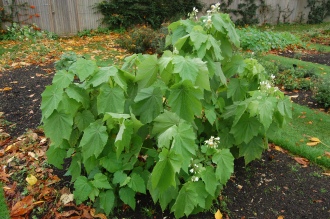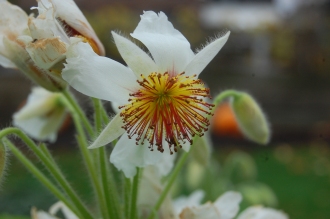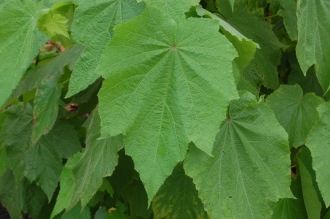Position: Full sun to dappled shade
Flowering period: Spring to early autumn
Soil: Moist, well drained
Eventual Height: 6m
Eventual Spread: 4m
Hardiness: 11, 12, 13
Family: Malvaceae
Sparrmannia africana is an evergreen shrub or small tree with a bushy habit. Its light leaves are ovate with shallow lobes, up to 27cm long and 21cm across. Its white flowers have prominent white and yellow stamens are up to 35mm across. Interestingly, its stamens are sensitive to touch and puff out when touched. Its fruit is a rounded capsule covered with spiny bristles.
Sparrmannia africana, commonly known as African Hemp, African Linden and House Lime, is native to south Africa. In its native habitat it grows in open woodlands and woodland margins.
The etymological root of the binomial name Sparrmannia is named after Anders Sparrman (1748–1820), a Swedish botanist. Africana is derived from the Latin meaning ‘from Africa’.
In the UK the landscape architect may find Sparrmannia africana useful as a large leaved shrub with attractive flowers for use as a annual in summer bedding scheme. It may also be used as a house plant when adequate light levels are provided.
Ecologically, Sparrmannia africana flowers are attractive to pollinating insects.
The Royal Horticultural Society have given Sparrmannia africana their prestigious Award of Garden Merit in 1993.
Sparrmannia africana prefers moist, fertile, well-drained soils. It tolerates most pH of soil.
Sparrmannia africana requires little maintenance.
![]()
Landscape Architecture















